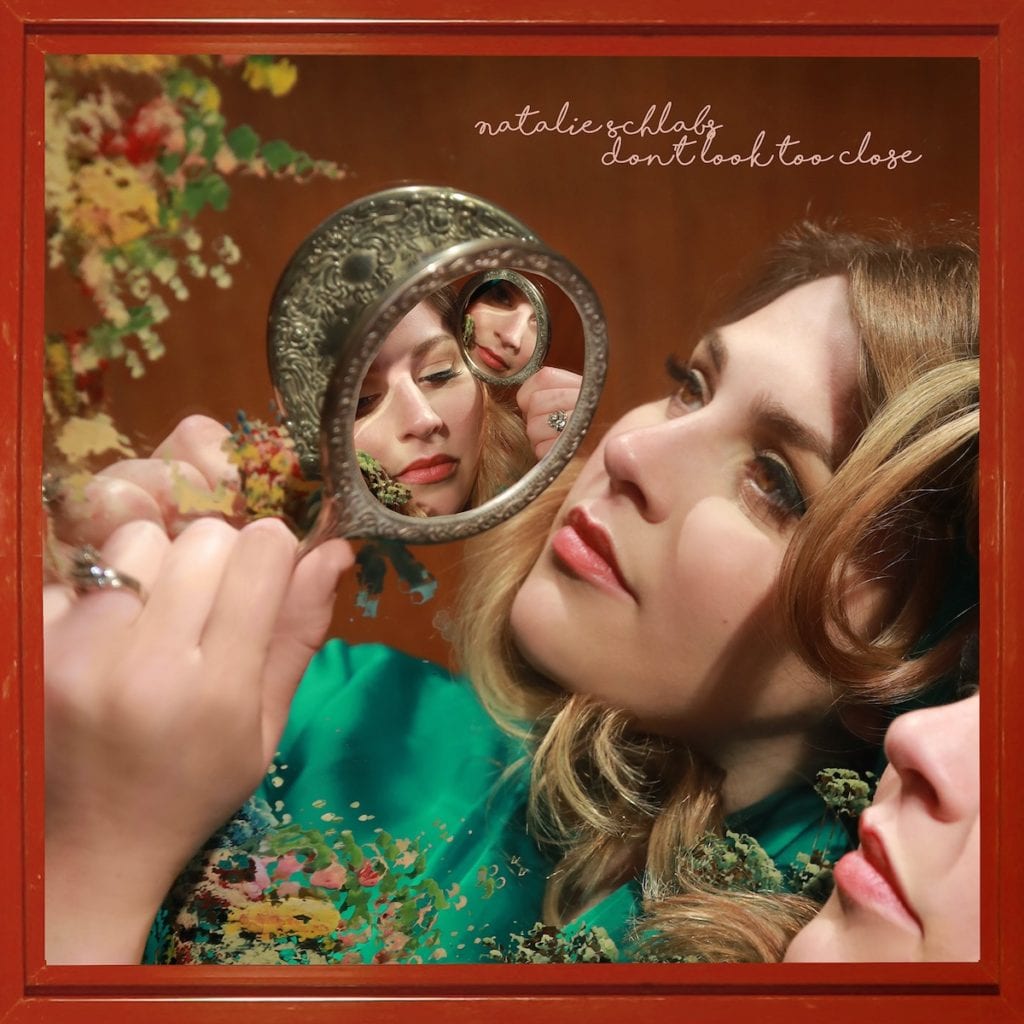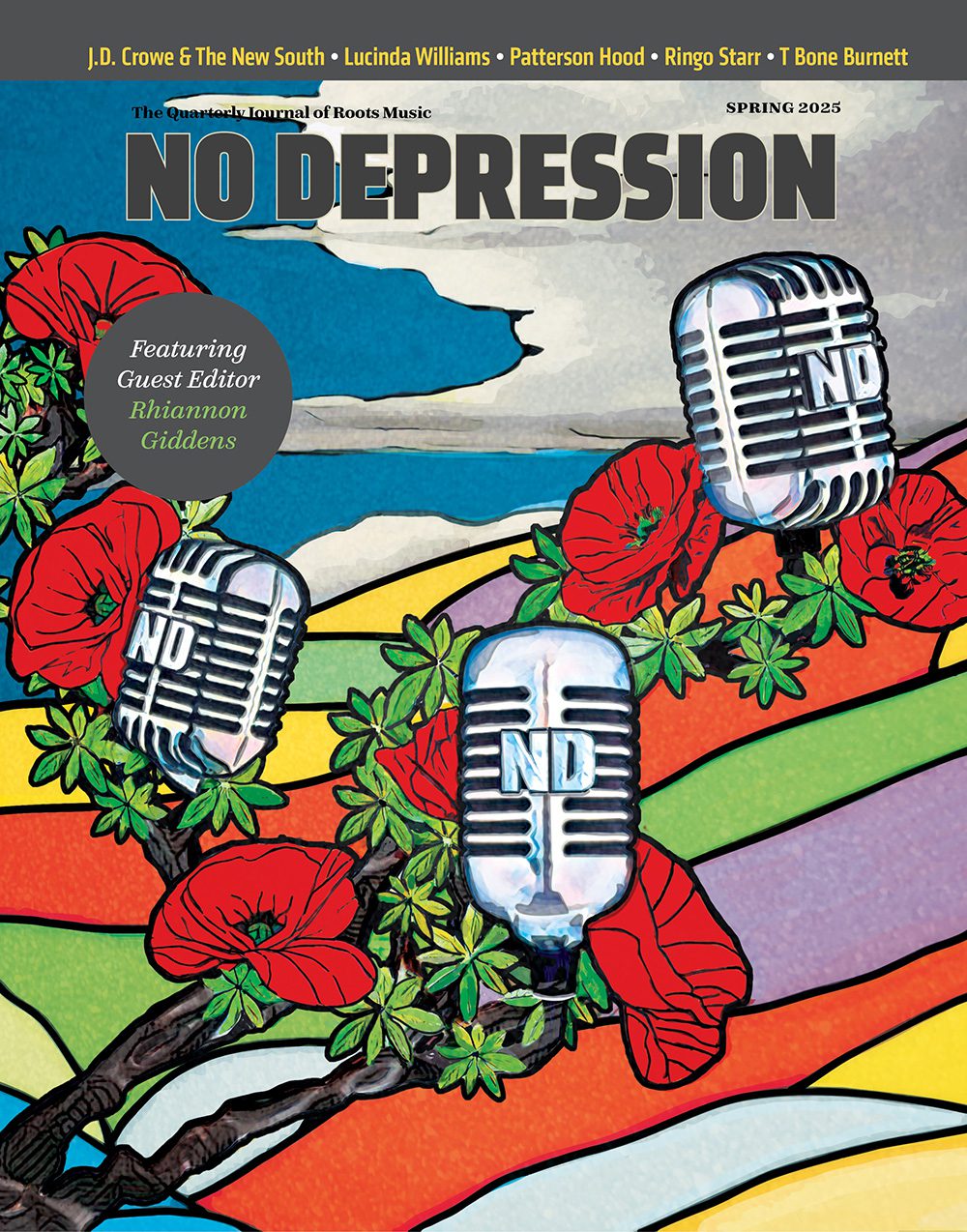Natalie Schlabs Examines the Past Through the Lens of the Future on ‘Don’t Look Too Close’

“That early love lingering / Has gotta be the best damn thing,” Natalie Schlabs sings in “That Early Love,” the opening track of her sophomore album, Don’t Look Too Close. That track is a lush foray into optimism that savors and clings to life’s most beautiful moments, while also spotlighting the singer’s clear, rich vocals.
Schlabs’ last album, 2016’s Midnight with No Stars, put a similar focus on her voice above all other musical elements. For that reason, “That Early Love” might be the most familiar track on the new record to fans of her already established sound. But the song also serves as a bridge to the singer’s next chapter, as she wades into more thematically complex subject matter.
The Texas-born, Nashville-honed singer-songwriter wrote the bulk of her album while pregnant with her first child, a now-2-year-old son named Desmond. The feeling of pregnancy is a constant theme underneath the album’s surface, whether that be Schlabs’ literal pregnancy or something more metaphorical: a state of interiority and self-reflection, and a constant re-examination of the past through the lens of imminent change.
In “See What I See,” the chorus winds itself into a sing-song-like meditation, with Schlabs repeating “Don’t, don’t go / See what I see.” Almost lullaby-like, the song’s rhythms mimic the circular, interior thought patterns common to any life stage of quiet incubation, where a person’s focus turns inward to process and manifest major change. Though she occasionally comes up for air in tracks like “Go Outside,” a brief reminder of the exterior world, and “Home Is,” a straight-ahead love song, Don’t Look Too Close mostly takes place inside the world of the artist or listener’s mind.
No matter how positive it is, any life change brings a level of grief and sadness. You can’t reach out to the future without glancing back toward the past, or savor joy without acknowledging sorrow. As Schlabs builds her new life as a mother, she finds new ways to think about who she is and was as a daughter and a child — and some of those realizations come with new sadness and anxieties.
“Christmas day, ’94, money’s short / Mom and dad, they’re trying not to let it show,” Schlabs sings in the first lyrics of the album’s title track. The song talks about how it wasn’t until she reached adulthood that she fully grasped some of the problems her parents faced when she was young.
Like many other songs on this project, “Don’t Look Too Close” capitalizes on the duality of the past and the future. In the same breath as she reflects on the struggles she didn’t see her parents having as a kid, Schlabs thinks ahead to her own child’s life, hoping he won’t notice the things that are difficult for her.
“Don’t look too close / Please say that you won’t / darlin,’” she sings. “You’ll see what I don’t want you to / Don’t look too close.”
Throughout the course of Don’t Look Too Close, Schlabs establishes her position as a link between the past and future, memory and imagination, child and parent. Her music plays with opposites throughout the project, and the ninth and final song, “Ophelia” — written for a friend who lost her daughter — reaches into the most extreme dichotomy there is, that of life and death.
Simultaneously gentle and haunting, the song brings Don’t Look Too Close to its natural conclusion. Death is the inherent, necessary counterpart of life, and Schlabs’ new project is, from start to finish, a meditation on the often surprising and seemingly self-contradictory counterparts of life’s biggest changes and challenges.


